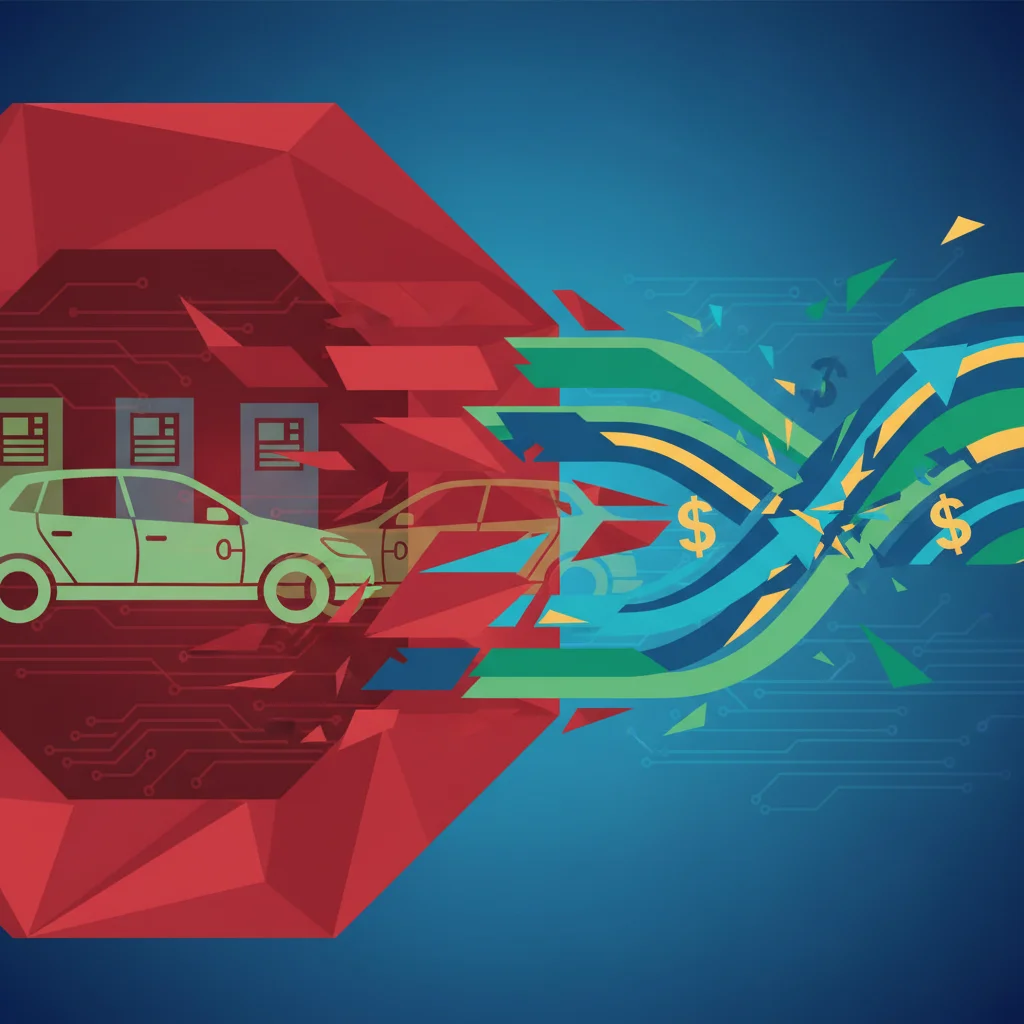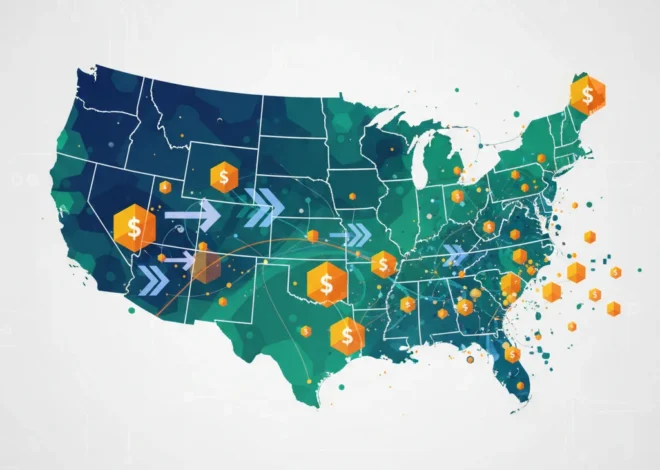
Red Light for Green Ambitions: Why US EV Investment is Hitting the Brakes and What It Means for the Economy
The roar of the electric vehicle (EV) revolution once seemed unstoppable, fueled by ambitious government incentives and a tidal wave of investor enthusiasm. The Inflation Reduction Act (IRA) was hailed as the supercharger for America’s green transition, promising to build a domestic manufacturing powerhouse that could rival the world. Yet, just a short time later, the engine appears to be sputtering. A chilling silence is falling over the once-feverish world of EV finance, as private investment plummets and automakers find themselves caught in a confusing web of mixed policy signals. This isn’t just a speed bump; it’s a potential multi-car pile-up on the road to an electric future, one that risks ceding the entire race to a formidable competitor: China.
For investors, business leaders, and anyone with a stake in the future of the American economy, the flashing warning lights are impossible to ignore. We are at a critical inflection point where the decisions made today will determine whether the U.S. leads the next generation of automotive technology or becomes a customer in a market dominated by others. This analysis will delve into the alarming investment data, dissect the policy paralysis gripping Washington, and map out the profound implications for the stock market, global trade, and the broader financial landscape.
The Great Investment Deceleration: Following the Money
The most tangible evidence of a slowdown comes directly from the flow of capital. The lifeblood of any emerging industry is investment, and for the U.S. EV sector, the tap is running dry at an alarming rate. According to an analysis of PitchBook data by the Financial Times, private investment into U.S. EV and battery companies has cratered, falling by more than 50% from $15 billion in 2022 to just $7 billion in 2023 (source). To put that in perspective, the global decline in the same period was a more modest 16%. This isn’t just a market correction; it’s a localized crisis of confidence.
This capital flight has immediate and severe consequences. Start-ups that were once darlings of the venture capital world are now struggling to secure funding, forcing them to scale back ambitious plans for new factories and technological research. Even established giants like Ford and General Motors are feeling the pressure. Ford recently announced it was cutting production of its F-150 Lightning electric truck and delaying $12 billion in planned EV investments. This is a direct response to a market that isn’t growing as quickly as projected, creating a vicious cycle: lower-than-expected demand dampens investor appetite, which in turn limits the capital needed to build better, cheaper EVs and the requisite charging infrastructure to spur demand.
For those engaged in the stock market and public trading, the volatility has been palpable. The share prices of many EV-focused companies have been battered as the market recalibrates its expectations from boundless growth to a more challenging, protracted transition. This shift reflects a fundamental uncertainty that extends beyond consumer demand and into the very heart of U.S. industrial policy.
The Absurdist's Edge: Why Acknowledging Workplace Nonsense is a Winning Investment Strategy
Policy Paralysis: A Green Light and a Red Light Simultaneously
At the core of this uncertainty is a perplexing duality in government policy. On one hand, the Biden administration’s Inflation Reduction Act (IRA) represents one of the most significant pieces of industrial policy in decades, earmarking billions in subsidies and tax credits to onshore the EV supply chain. This was the starting gun that sent automakers sprinting towards an electric future, committing vast sums of capital to retool factories and develop new models.
On the other hand, recent regulatory moves have sent a conflicting message. The administration has proposed relaxing planned tailpipe emissions standards for petrol-powered cars through 2030. While framed as a pragmatic response to the pace of the transition, for many in the industry, it feels like the government is easing off the accelerator just as the race gets tough. This poses a crippling dilemma for auto executives. As one industry figure noted, “The White House is backing two horses in the same race” (source). How can a company justify multi-billion-dollar, decade-long investments in EV technology when the regulatory landscape that underpins that investment appears to be shifting?
This policy ambiguity has a chilling effect on corporate finance and long-term strategic planning. It creates a high-risk environment where deploying capital becomes a gamble on future political whims rather than a calculated business decision based on a stable regulatory framework. The fundamental economics of the transition are being undermined by a lack of consistent, long-term commitment from policymakers.
A Tale of Two Systems: The U.S. vs. China EV Landscape
To truly grasp the gravity of the U.S. position, it’s essential to contrast it with China’s relentless forward momentum. China isn’t just participating in the EV market; it is actively shaping it through decades of concerted industrial policy, massive state subsidies, and the cultivation of a hyper-competitive domestic ecosystem.
The following table provides a stark comparison of the two nations’ approaches and outcomes in the global EV race.
| Metric | United States | China |
|---|---|---|
| Investment Trend | Private investment fell over 50% in 2023. Capital is becoming scarce. | Sustained, state-backed investment in manufacturing, R&D, and infrastructure. |
| Government Policy | Ambitious but inconsistent; recent moves suggest a slowdown in regulatory pressure. | Consistent, long-term strategy with aggressive mandates, subsidies, and export support. |
| Market Share | EVs represent about 9% of new car sales. | EVs account for over 35% of the domestic market, the largest in the world. |
| Battery Supply Chain | Heavily reliant on foreign imports, particularly from China. IRA aims to change this. | Dominates global battery production and controls significant portions of raw material processing. |
| Consumer Adoption | Hampered by high prices, range anxiety, and inadequate charging infrastructure. | Driven by a wide variety of affordable models and extensive, state-supported charging networks. |
China’s dominance is the result of a long-term vision. It has vertically integrated the entire supply chain, from mining lithium and processing cobalt to manufacturing battery cells and assembling vehicles. This control gives Chinese firms a significant cost advantage. Companies like BYD can now produce EVs so cheaply that they pose a threat not just in their home market but globally. This industrial strategy is a masterclass in modern economics, one that the fragmented, market-driven approach in the U.S. is struggling to counter.
Sailing into the Storm: Why the Offshore Wind Revolution is Facing a Financial Crisis
The Ripple Effect: What This Means for Your Portfolio and the Economy
The slowdown in the U.S. EV sector sends shockwaves far beyond the auto industry, creating a complex new landscape for investing and the national economy.
For Investors and Traders:
The immediate outlook is one of heightened risk and volatility. The narrative of “growth at any cost” has been replaced by a focus on profitability and sustainable business models. Investors must now be far more discerning:
- Legacy Automakers: Companies like Ford and GM are in a precarious position. Their stock valuations could suffer as they navigate the costly and now uncertain transition, balancing EV investments with their profitable gasoline-powered vehicle lines.
- EV Start-ups: Pure-play EV companies without a clear path to profitability face an existential threat. The era of easy money is over, and consolidation or bankruptcies are likely.
- Ancillary Sectors: The slowdown impacts the entire ecosystem, from battery technology firms and charging infrastructure providers to suppliers of lithium and other raw materials. However, opportunities may arise in companies providing critical components or technologies that improve efficiency and lower costs.
Innovative financial technology platforms, or fintech, could play a role in creating new financing models for EVs and charging stations, but their success is contingent on the health of the underlying industry. Similarly, the promise of using blockchain for transparent and ethical battery supply chain tracking loses its urgency if the supply chains themselves fail to develop on U.S. soil.
For the Broader Economy:
The stakes are immense. A faltering EV transition threatens to undermine one of the biggest opportunities for a U.S. manufacturing renaissance. The jobs, technological leadership, and energy independence promised by a robust domestic EV industry are all at risk. If the U.S. becomes a net importer of EV technology and vehicles, it will represent a significant blow to the nation’s economic competitiveness and a major strategic victory for China. The future of American banking and finance is also intertwined, as trillions in loans and investments are tied to the success of this industrial shift.
India's Trillion-Dollar Tech Dilemma: Can It Innovate Its Way Out of China's Shadow?
The Road Ahead: A Call for Clarity and Commitment
The U.S. EV industry is not at a dead end, but it is navigating a treacherous crossroads with a faulty GPS. The current combination of plummeting private investment and wavering political commitment has created a crisis of confidence that threatens to stall the engine of progress indefinitely. Reversing this trend requires a clear, consistent, and unwavering long-term strategy from Washington that gives automakers and investors the stability they need to make decade-spanning capital commitments.
Without this clarity, the U.S. risks watching the EV revolution from the rearview mirror as China speeds ahead, defining the technology, controlling the supply chains, and reaping the economic rewards. The race is far from over, but America is at risk of being lapped before it even completes the first turn.


